Now, thanks to Lehigh University's unrivaled electron microscopy and spectroscopy facilities, researchers have gained unmatched insights that could improve the efficiency and extend the applications of the powerful nanoparticles.
Jun 18th, 2010
Read more
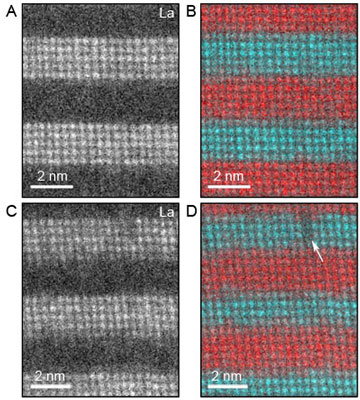 Using cutting-edge spectroscopy at atomic resolutions, researchers have discovered how to grow ultra-thin manganite films while retaining their magnetic properties.
Using cutting-edge spectroscopy at atomic resolutions, researchers have discovered how to grow ultra-thin manganite films while retaining their magnetic properties.
Jun 18th, 2010
Read more
 Physiker erzeugen ein Bose-Einstein-Kondensat in der Schwerelosigkeit - ein Schritt hin zu extrem sensiblen Quantensensoren fuer die Gravitation.
Physiker erzeugen ein Bose-Einstein-Kondensat in der Schwerelosigkeit - ein Schritt hin zu extrem sensiblen Quantensensoren fuer die Gravitation.
Jun 18th, 2010
Read more
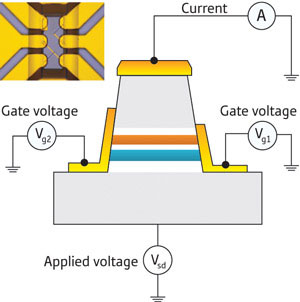 Artificial 'molecules' with an asymmetric structure can control the flow of electrons in semiconductor materials.
Artificial 'molecules' with an asymmetric structure can control the flow of electrons in semiconductor materials.
Jun 18th, 2010
Read more
The EU will add EUR 40 million to its contribution to the international Cooperation in Science and Technology (COST) programme.
Jun 17th, 2010
Read more
Physicists at UC Santa Barbara have created a microscopic device to assist biologists in making very fast molecular measurements that aid the understanding of protein folding.
Jun 17th, 2010
Read more
Physicists at Harvard University have, for the first time, tracked individual atoms in a gas cooled to extreme temperatures as the particles reorganized into a crystal, a process driven by quantum mechanics.
Jun 17th, 2010
Read more
Conventional solar cell efficiency could be increased from the current limit of 30 percent to more than 60 percent, suggests new research on semiconductor nanocrystals, or quantum dots, led by chemist Xiaoyang Zhu at The University of Texas at Austin.
Jun 17th, 2010
Read more
Als Eroeffnungsveranstaltung des Landesexzellenzclusters Nanospintronics findet vom 16. bis 18. Juni 2010 im Hotel Vierjahreszeiten in Hamburg das Europaeische Symposium Nanospintronics mit 150 internationalen und nationalen Wissenschaftlern statt, die ueber neueste Erkenntnisse und Innovationen auf dem Gebiet der Nano-Spintronik diskutieren werden.
Jun 17th, 2010
Read more
The Citizen Alliance on the ChallEnges of Nanotechnologies (CACEN) (in French 'Alliance Citoyenne sur les Enjeux des Nanotechnologies': ACEN) has just opened a new website nano.acen-cacen.org where citizens can find and share information, questions, and analyses about societal issues raised by nanotechnologies.
Jun 17th, 2010
Read more
The Technology Strategy Board and EPSRC led cross-Research Council programme on nanotechnology are working closely together to stimulate the development and commercialisation of exciting new ideas in next generation solar energy harvesting.
Jun 17th, 2010
Read more
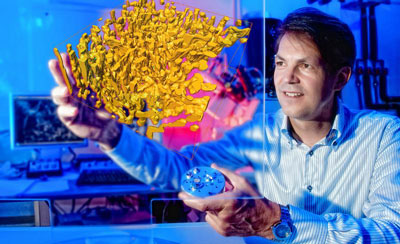 Im Regionalforum Materialographie Saar haben sich jetzt Firmen, die Werkstoffe pruefen und ihre Qualitaet ueberwachen, mit der universitaeren Forschung vernetzt. Auf Initiative von Frank Muecklich, Professor fuer Funktionswerkstoffe der Universitaet des Saarlandes und Direktor des Steinbeis-Zentrums fuer Materialforschung (MECS), werden sich Metallographen, Werkstoffpruefer, Techniker und Ingenieure kuenftig regelmaessig ueber neue Verfahren austauschen.
Im Regionalforum Materialographie Saar haben sich jetzt Firmen, die Werkstoffe pruefen und ihre Qualitaet ueberwachen, mit der universitaeren Forschung vernetzt. Auf Initiative von Frank Muecklich, Professor fuer Funktionswerkstoffe der Universitaet des Saarlandes und Direktor des Steinbeis-Zentrums fuer Materialforschung (MECS), werden sich Metallographen, Werkstoffpruefer, Techniker und Ingenieure kuenftig regelmaessig ueber neue Verfahren austauschen.
Jun 17th, 2010
Read more
Physicists at the University of Sydney have brought silicon chips closer to performing all-optical computing and information processing that could overcome the speed limitations intrinsic to electronics, with the first report published of an on-chip all-optical temporal integrator.
Jun 17th, 2010
Read more
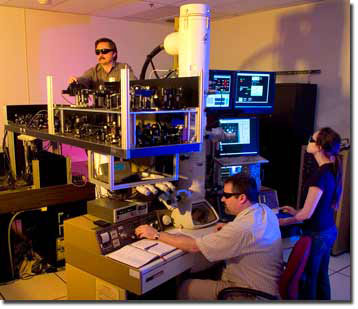 Scientists can now peer into the inner workings of catalyst nanoparticles 3,000 times smaller than a human hair within nanoseconds. The findings point the way toward future work that could greatly improve catalyst efficiency in a variety of processes that are crucial to the world's energy security, such as petroleum catalysis and catalyst-based nanomaterial growth for next-generation rechargeable batteries
Scientists can now peer into the inner workings of catalyst nanoparticles 3,000 times smaller than a human hair within nanoseconds. The findings point the way toward future work that could greatly improve catalyst efficiency in a variety of processes that are crucial to the world's energy security, such as petroleum catalysis and catalyst-based nanomaterial growth for next-generation rechargeable batteries
Jun 17th, 2010
Read more
 With hands-on experiences in childhood and adolescence having sparked so many science careers, scientists in Canada are describing a quick, simple, safe, and inexpensive way for kids to participate in making microfluidic devices.
With hands-on experiences in childhood and adolescence having sparked so many science careers, scientists in Canada are describing a quick, simple, safe, and inexpensive way for kids to participate in making microfluidic devices.
Jun 16th, 2010
Read more
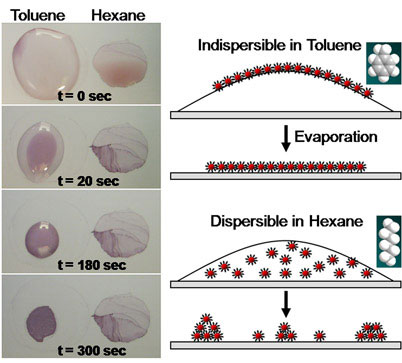 Researchers at Rensselaer Polytechnic Institute have developed a new, ultra-simple method for making layers of gold that measure only billionths of a meter thick. The process, which requires no sophisticated equipment and works on nearly any surface including silicon wafers, could have important implications for nanoelectronics and semiconductor manufacturing.
Researchers at Rensselaer Polytechnic Institute have developed a new, ultra-simple method for making layers of gold that measure only billionths of a meter thick. The process, which requires no sophisticated equipment and works on nearly any surface including silicon wafers, could have important implications for nanoelectronics and semiconductor manufacturing.
Jun 16th, 2010
Read more








 Subscribe to our Nanotechnology News feed
Subscribe to our Nanotechnology News feed